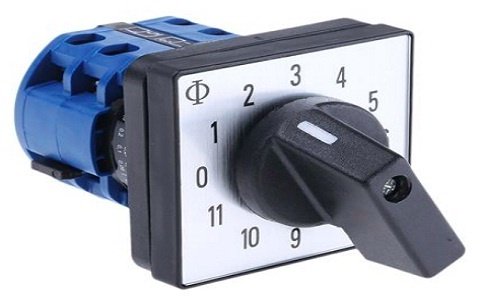The switch, in its various forms, is a cornerstone of electrical and electronic systems. These humble components determine how, when, and where current flows, allowing us to interface with and control devices. While there’s a multitude of switch types available, one classic design that has persisted is the rotary switch. How does this type of switch compare to others in terms of functionality, usability, and applications? Let’s delve into the comparative analysis between rotary switches and other prevalent switch types.
Defining the Rotary Switch
Before comparing, it’s essential to understand what a rotary switch is. As its name implies, a rotary switch operates through a rotational action. A user turns a knob or shaft, which in turn rotates a contact arm/blade inside the switch. Depending on the position, this arm connects to one of several contact points, closing the circuit in a specific manner.
Rotary Switches vs. Toggle Switches
- Functionality: Toggle switches generally have two or three positions: on/off or on/off/on. Rotary switches can have multiple positions, sometimes exceeding 10, which makes them suitable for applications requiring multiple settings or functions from a single switch.
- Usability: Toggle switches are intuitive – up or down, on or off. However, rotary switches, especially those with many positions, can offer a clear, tactile feedback for every setting, which can be useful in situations where the user cannot easily see the switch.
- Applications: You’ll often find toggle switches in simple applications, like light switches or manual on/off controls. Rotary switches excel in situations like multi-speed fans, where several settings emanate from a single control point.
Rotary Switches vs. Push Button Switches
- Functionality: Push-button switches work through a simple press-and-release mechanism. These can either be momentary (returning to their default state after release) or latching (maintaining their state until pressed again). Rotary switches, on the other hand, maintain the state of their chosen position until they are turned to another.
- Usability: Push buttons are straightforward and are often used in applications where rapid engagement and disengagement are required. Rotary switches require a turn, making them less suitable for quick operations but better for settings that should remain consistent until deliberately changed.
- Applications: Push-button switches are prevalent in machinery control panels, elevators, and many electronic devices. Rotary switches are seen in old-style television sets, multi-band radios, and industrial control systems where specific settings are chosen.
Rotary Switches vs. Slide Switches
- Functionality: Slide switches move linearly in one direction or the other to open or close a circuit. While they typically have fewer positions than a rotary switch, they provide a direct path of movement.
- Usability: The linear motion of a slide switch can be more intuitive for users, especially in up/down or left/right configurations. Rotary switches, with their circular movement, might be better for applications where the switch’s position represents a cycle or spectrum.
- Applications: Slide switches are common in electronics, often as power switches for handheld devices. Rotary switches, due to their multi-position functionality, find applications in situations where nuanced control or multiple settings are required.
Advantages of Rotary Switches
- Multiple Positions: As reiterated, one of the standout features of rotary switches is their ability to handle multiple positions. This makes them ideal for complex controls from a single point.
- Durability: Rotary switches, especially those designed for industrial applications, are often robust and can handle a significant number of turning cycles before wearing out.
- Clear Feedback: The tactile sensation of turning to a specific position can provide clear feedback, essential in settings where the user might not be directly observing the switch.
Drawbacks of Rotary Switches
- Size: Given the need for multiple contact points, rotary switches can be bulkier than other switch types.
- Complexity: With multiple positions comes added complexity, both in terms of internal design and for the user, especially if the switch has many settings.
- Speed: In applications where rapid switching is necessary, the time it takes to turn a rotary switch to the desired position might be a limiting factor.
Conclusion
The rotary switch, with its distinctive rotational operation, offers unique advantages over toggle, push-button, and slide switches. Its ability to handle multiple positions from a single control point sets it apart. However, the right switch choice always boils down to the specific requirements of the application. By understanding the strengths and weaknesses of each switch type, designers and users can make informed decisions that optimize functionality and user experience.



One Comment on “Rotary Switches vs. Other Switch Types: A Comparative Analysis”
Comments are closed.